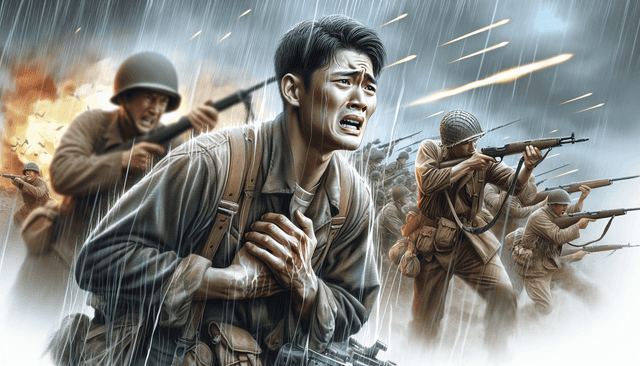Table of Contents
Writing military fiction can feel like a daunting task. You’re not alone if you’re worried about getting the details right or making your characters believable. It’s tricky to balance authenticity with a gripping narrative that keeps readers on the edge of their seats.
But don’t worry! By following a few straightforward steps, you’ll craft a compelling military story that resonates. If you stick with me, you’ll uncover tips on everything from research to character development that will make your writing shine.
Get ready to dive into the nitty-gritty of military fiction! We’ll explore what makes this genre unique, how to write realistic battles, and ways to create relatable characters that leap off the page. Let’s get started!
Key Takeaways
- Understand the essence of military fiction, focusing on soldiers’ experiences and the impacts of war.
- Conduct thorough research on historical context, military protocols, and soldiers’ realities for authenticity.
- Include multiple layers of conflict: external, internal, and interpersonal, to deepen the narrative.
- Write realistic battle scenes that capture the chaos and emotional experiences of soldiers.
- Handle tropes carefully; twist clichés to keep the story fresh and engaging.
- Incorporate emotions like fear and camaraderie to create strong connections with readers.
- Create authentic, multi-dimensional military characters with unique backgrounds and motivations.
- Use realistic military language and details to build credibility without alienating readers.
- Write from multiple character perspectives to showcase the complexities of conflict.
- Be open to criticism as a tool for growth and engage with knowledgeable peers for valuable feedback.

Step 1: Understand What a Military Fiction Story Is
Military fiction tells stories that are rooted in armed conflict, focusing on soldiers, their experiences, and the repercussions of war on individuals and society.
It encompasses not just the action on the battlefield, but also the psychological and emotional struggles that soldiers face.
Before you even put pen to paper, take some time to read various military fiction works to grasp the theme, tone, and character arcs that resonate with readers.
Consider classics like Stephen Crane’s “The Red Badge of Courage” or more contemporary pieces like “Redeployment” by Phil Klay to see how authors navigate complex themes.
Step 2: Conduct Thorough Research for Authenticity
If you’re writing a war story, you must fully embrace research to make your narrative credible and engaging.
This starts with understanding the historical context of the conflict you’re depicting—know the landscape, the specific war, and the socio-political dynamics of that era.
Be sure to dig into the military protocols, equipment, and the day-to-day realities of soldiers to accurately portray their experiences.
Books, documentaries, and credible military websites will be valuable resources. Websites like the National Archives can provide insights into historical documents that add depth to your narrative.
Joining forums or groups with veterans can also give you firsthand accounts, which can enhance authenticity.
Step 3: Use Different Types of Conflict
A good military fiction story thrives on multiple layers of conflict.
External conflict, typically the battles and fights against enemies, is essential, but don’t forget about internal and interpersonal conflicts.
Internal conflict often stems from a character’s struggle with their own beliefs, values, or survival instincts in war situations.
For instance, soldier characters might face dilemmas about their responsibilities versus the impact of their actions on innocent lives.
Interpersonal conflicts, like those between enlisted soldiers and their commanding officers, can reveal the complexities of military relationships and hierarchies.
This multiplicity of conflict enriches your tale and creates a deeper emotional resonance with your readers.

Step 4: Write Realistic Battle Scenes
Realistic battle scenes are the heart of military fiction.
When writing these scenes, make sure to focus on what the soldiers are experiencing, both physically and mentally.
Consider the chaos of the battlefield—the sounds of gunfire, the orders shouted, and the urgency of survival.
It’s important to combine the personal stories of individual soldiers with the larger scope of the battle.
Instead of isolating your characters, show how their actions contribute to the wider conflict.
Remember, you’re not just telling a story of one soldier; you’re capturing a collective experience.
Moreover, describing the environment and situation can create a vivid backdrop that enhances the tension.
Referencing resources on writing compelling battle scenes can help you nail this aspect, like seeking insights from [this article on developing military characters](https://automateed.com/realistic-fiction-writing-prompts/).
Step 5: Handle Tropes with Care
Tropes can either enhance your story or drag it down.
Military fiction is rife with clichés—like the “tragedy of the fallen comrade” or “heroic last stands.”
While there’s nothing wrong with using familiar elements, it’s crucial to approach them with a fresh perspective.
Instead of forcing a trope, think about how to twist it or subvert expectations.
For example, instead of having soldiers simply die heroically, explore the aftermath of those losses in a more profound way.
Avoid overused acronyms and descriptions of weapons; stick to what adds value to the story without being overwhelming.
Finding a unique spin can often lead to memorable scenes that resonate with readers.
Step 6: Incorporate Emotions to Enhance Storytelling
Emotion is woven into the fabric of military life.
In your story, don’t shy away from exploring fear, courage, loss, and even camaraderie among the soldiers.
These feelings can turn a good story into a great one by creating strong connections with readers.
For instance, writing about the fear during a firefight can evoke empathy.
Highlight those small moments of hope or companionship amidst the chaos.
Additionally, you can showcase character development through their emotional responses to trauma or victory.
Read up on how other authors have successfully captured these emotions, much like in [this insightful writing guide](https://automateed.com/horror-story-idea-generator/).
Step 7: Create Authentic Military Characters
Military fiction is only as good as its characters.
When crafting your military characters, avoid stereotypes and focus on their individuality.
Each soldier has a unique backstory and personal motivations that drive their actions.
Be thoughtful about their roles—consider the differences between enlisted and officer perspectives.
Many enlisted soldiers come from diverse backgrounds and may not have expected life to lead them to the military.
Understanding their journey can make them more relatable and compelling.
Take time to create rich, multi-dimensional characters that readers can root for or empathize with.
Draw from real-life narratives and experiences to give your characters depth and authenticity.
Step 8: Use Realistic Military Language and Details
The devil is in the details when it comes to military fiction.
Using accurate terminology not only builds credibility, but also immerses your readers in the story.
Research notable military jargon, acronyms, and protocols, and employ them naturally.
However, be careful not to overload your writing with unnecessary terms that may alienate readers.
Instead, find that sweet spot where the language feels authentic but accessible.
Think of how authentic communication flows among soldiers, using dialogue to reveal these subtleties.
The aim is to create a genuine atmosphere without alienating those unfamiliar with military lingo.
Step 9: Write from Multiple Perspectives
Different perspectives can provide a rich narrative tapestry.
Consider telling your story through the eyes of various characters—soldiers, commanders, and civilians.
Each will have unique insights that enrich the storytelling experience.
This approach can showcase the multi-faceted nature of conflict and its effects on diverse lives.
For instance, a soldier’s perspective can reveal the harsh realities of war, while a civilian’s story might emphasize the home front’s struggles.
Incorporating these perspectives allows for a more holistic portrayal of military life and its aftermath.
Ultimately, this method can leave a lasting impression on readers by emphasizing the complexities of war.
Step 10: Prepare for and Handle Criticism
Criticism is a natural part of being a writer, especially in the military fiction realm.
Be ready for feedback, whether it’s from beta readers or industry professionals.
Don’t take it personally—use it as an opportunity for growth.
Consider sharing drafts with others who are knowledgeable about military topics to gain valuable insights.
Engage with writing communities where you can discuss your progress and gather constructive feedback.
When you’re open to critique, you not only improve your writing but also build credibility as an author.
Embrace the process. It’s all part of improving and finding your unique voice within the genre.
FAQs
A military fiction story typically blends elements of military themes, strategies, and scenarios with character-driven narratives, focusing on conflicts, battles, and the psychological impact of war on individuals and societies.
Effective research can be conducted by studying military history, reading firsthand accounts, consulting veterans, and utilizing documentaries and reputable sources. This ensures accuracy in your depictions of military life, tactics, and culture.
Common tropes to avoid include glorifying war, overly caricatured characters, and unrealistic portrayals of military procedures. These can detract from the authenticity and depth of storytelling in military fiction.
Handling criticism involves being open to feedback, analyzing comments objectively, and using them to improve your writing. Engage constructively with criticism, but trust your vision and narrative direction.



